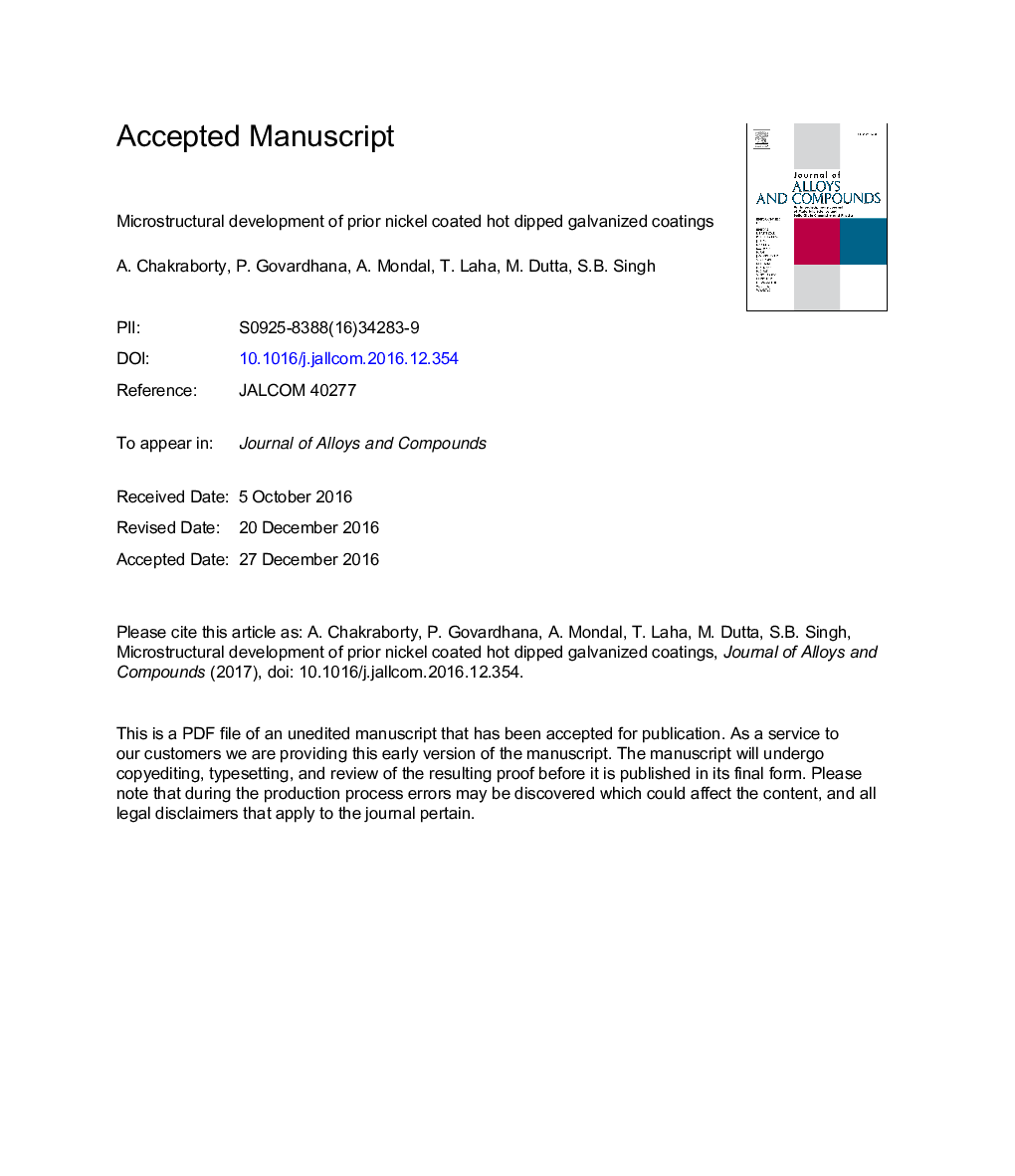| Article ID | Journal | Published Year | Pages | File Type |
|---|---|---|---|---|
| 5460590 | Journal of Alloys and Compounds | 2017 | 25 Pages |
Abstract
Hot dip galvanising of steel is an age old process to protect the steel substrate from corrosion owing to the sacrificial protection from zinc. The galvanised coating quality and performance can be further improved by addition of other alloying elements in molten metal bath or by using prior coatings on the steel substrate. In the present study pure nickel was electrodeposited on Interstitial Free (IF) steel substrate, which was then galvanised. The microstructural evolution of different phases was studied as a function of prior nickel coating thickness and time of galvanising. Glow Discharge Optical Emission Spectroscopy (GDOES) was employed to find out the elemental concentration depth profile and the overall thickness of galvanised coatings. Cross sectional Scanning Electron Microscope (SEM) and Energy Dispersive Spectroscopy (EDS) results revealed the morphology of different phase layers. Additionally, cross sectional elemental mappings were generated using Electron Probe Micro Analyzer (EPMA) and Wavelength Dispersive Spectroscopy (WDS). Different coating phases were identified by grazing angle X-Ray Diffraction (XRD) techniques. The hardness and modulus of individual Ni-Zn phases were obtained from nano indentation method. It was found that application of a prior nickel coating drastically reduced the coating thickness as compared to conventional galvanised coatings. Moreover beyond a certain thickness of prior nickel coating, Ni-Zn phases rather than the Fe-Zn phases, were formed. The dissolution behaviour of nickel in molten zinc bath and subsequent Ni-Zn phase transformation was computed considering the Wagner's approach of integrated diffusion coefficient. For lower time of galvanising the calculated phase layer thicknesses were in well accordance with the experimental data. The hardness of overlay zinc was the least among different phase layers with an increasing trend in nickel rich phases towards the interface.
Related Topics
Physical Sciences and Engineering
Materials Science
Metals and Alloys
Authors
A. Chakraborty, P. Govardhana, A. Mondal, T. Laha, M. Dutta, S.B. Singh,
